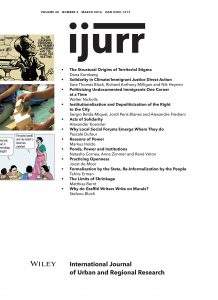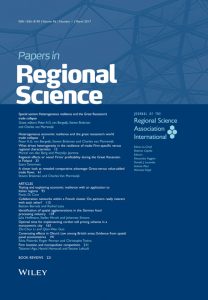The larger, the poorer, the more penalized families: an Italian perspective

In Italy, as in most other advanced economies, large families are much less common than in the past. But does this mean that their needs should not be specifically considered by social policy? This question is at the heart of an article we recently published on the International Journal of Social Welfare titled “The large family penalty in Italy: Poverty and eligibility to minimum incomes”. This blog article has the aim of delivering its main results to the broader public. To do so, we guide the reader though our reasoning by answering to a set of simple questions.
1. What is a large family? And are large families important nowadays in Italy?
There are many ways to define large families: the easiest is to simply count the number of members and impose a threshold after which families are considered ‘large’. In our work, however, we use a child-centred definition according to which ‘large’ families are those with at least three co-resident children (i.e. aged less than 18). The reason for this choice is twofold: first, since our primary interest is in child poverty, including families with few or no children and many adults could potentially bias results due to the higher employability of adults with respect to children. Second, by definition, children tend to be more concentrated in families with many children.
While our analysis focuses on 2019, we use data from 2017 to 2021 to analyse the prevalence of large families in Italy. We find that, among families with children, roughly 8.5% are large according to the definition discussed above. Taking the perspective of children, between 17 and 19% (depending on the year) live in large families.
The key takeaway is that large families are rather rare in Italy, but a non-negligible share of children lives in such families. We thus base all our analyses only on families with children.
2. Are children in large families poorer than those in small families with children?
The second tile of the mosaic we are building requires answering to this crucial question. Indeed, in a world where child poverty tends to be concentrated in large families and, as highlighted above, many children live in these families, social policies should explicitly consider the needs of large families. Our results for Italy in 2019 do not leave much room for interpretation: while almost 9% of children living in small families – those with one or two children – are in absolute poverty, over 19% of children living in large families – those with three or more children – are in absolute poverty. A striking difference!
These numbers show that in Italy children in large families fare much worse than their fellows in small families with relevant implications for life-course opportunities. Family size in terms of co-resident children should thus be a key dimension of social policy. But which social policies? In the current institutional framework, poverty alleviation is primarily left to a set of residual policies known as minimum income schemes and it is these policy measures we analyse in what follows.
However, before proceeding with our reasoning, a few words on the specific poverty indicator observed above are due. More specifically, we use a consumption-based absolute poverty concept according to which households are poor if their monthly expenditure falls short of the minimum amount of money needed to buy a household-specific basket of basic goods and services (food, accommodation, participation to social life). This means that the type of poverty we observe refers to the effective living standard of the family where the child lives making the results mentioned above even more worrying and compelling for social policy.
3. What are minimum income (MI) schemes? And how does the Italian MI work?
The first two building blocks of our reasoning provide the motivation for what remains of our work: large families, while relatively rare, include almost one fifth of Italian children and are strongly exposed to absolute poverty. Social policy in general, and minimum income schemes in particular, should thus step in.
MI schemes are residual targeted policies which aim to fight poverty and, very often, to help recipient employable individuals to (re) enter the labour market. They are targeted in the sense eligible households must comply with income and/or wealth requirements determining those which are sufficiently poor to ‘deserve’ social assistance. Italy introduced its first national MI scheme in 2018, which was substituted the following year by the Reddito di Cittadinanza (RDC) (literally: “citizen income”) which is also the policy we focus on in our work. The RDC was then terminated in January 2024 and substituted by a similar but less generous and inclusive measure named Assegno di inclusione (literally: “inclusion allowance”).
The RDC has all the usual features of MI schemes: an income test, a wealth test, and a set of work activation requirements. The specific thresholds of the income test are determined by a very peculiar equivalence scale.
4. What is an equivalence scale? And why is this concept relevant for social policy?
Equivalence scales are devices to compare the resources of families of different sizes. In practice, an equivalence transforms family resources in equivalent-individual resources so, at its heart, it is just a scaling factor. The extent of the ‘scaling’, however, depends on what one assumes on the economies of scale from living together (which arise from expenses for durable goods, rent or mortgage, or shared utilities such as heating or electricity). To clarify, let’s consider two extreme examples. At one end, if all consumption were considered as non-rival within the household, the equivalence scale parameter would be equal to 1. At the other hand, if all consumption were considered as rival within the household the equivalence scale would be equal to the number of household components. As usually happens, there is no consensus on the importance of economies of scale form living together and, as a consequence, many different equivalence scales exist. Also notice that consumption baskets largely differ along the income distribution and across the life cycle: for instance, households with young children may have child-related consumption needs concerning rival goods – nappies, nursery, medical expenses – and, consequently, relatively low economies of scale from living together.
5. Are large families penalised by the Italian MI scheme?
The final step of our reasoning puts together the various pieces of the puzzle we built in this article. The question which gives the title to this paragraph may thus be broken down into two groups of sub-questions. First, among children in absolute poverty, how many were excluded by the eligibility requirements in 2019? How many were instead eligible for the RDC? How do these shares change according to sibling size? Second, does the RDC equivalence scale matter? Would the coverage rate and the benefit generosity improve for large families adopting a different equivalence scale?
First, 63% of children in absolute poverty are excluded by at least one of the RDC requirements. This share is lower, but still worryingly high, for children in large families (55.4%, and 59.4% for families with three and four or more children, respectively) which, as reminded above, are much more exposed to absolute poverty. The mirror image is a coverage rate of 37% for children in absolute poverty which rises to 44.6% and 40.6 for poor children living in families with three and four children, respectively. These figures provide a first representation of the large family penalty.
To assess the extent to which the large family penalty depends on the peculiar RDC equivalence scale, we compute counterfactual income eligibility requirements based on two different equivalence scales – the ISE scale, which is specific to the Italian welfare system and is mainly calculated as the number of household members powered by 0.65, and the modified OECD scale. The RDC equivalence scale indeed assumes very high economies of scale from living together and is may thus strongly penalising for large families. In practice, we simulate two ‘counterfactual’ sets of potential beneficiaries differing only by the equivalence scale used to compute the income test.
We find that RDC coverage among poor children would increase by over 25 percentage points using the more generous ISE scale and by 16 percentage points using the modified OECD scale. We also find that using the alternative equivalence scales benefits would be much more generous for large families.
This exercise thus highlights two main issues. First, the choice of the equivalence scale is a crucial assumption in the context of means-tested social policies and may have a strong impact on both coverage and adequacy of MI. Second, a significant large family penalty exists in Italy: children in large families are more exposed to poverty than those in their smaller counterparts and, on top of this, MI policy adopts a penalising equivalent scale (even worsened by the recent MI reform) that limits coverage and adequacy of MI among poor children. Something to think about for policymakers.
References
Aprea, M., Gallo, G., & Raitano, M. (2024). The large family penalty in Italy: Poverty and eligibility to minimum incomes. International Journal of Social Welfare, 1–17. https://doi.org/10.1111/ijsw.12668
Authors
- Massimo Aprea, Department of Economics and Law, Sapienza University of Rome, Rome, Italy
- Giovanni Gallo, Department of Economics “Marco Biagi”, University of Modena and Reggio Emilia, CAPP, Modena, Italy
- Michele Raitano, Department of Economics and Law, Sapienza University of Rome, Rome, Italy





